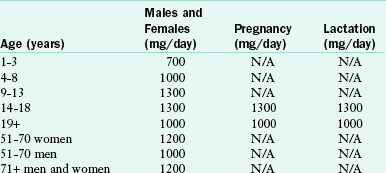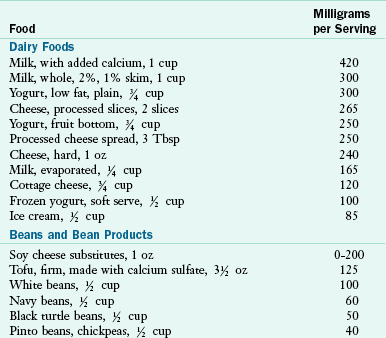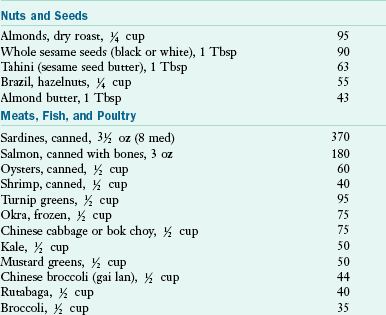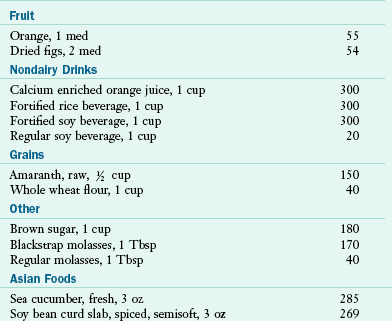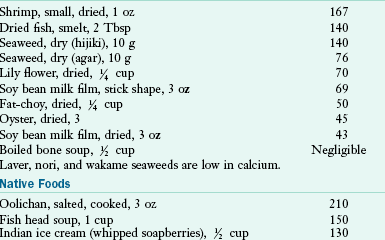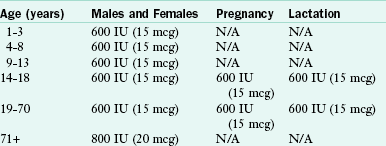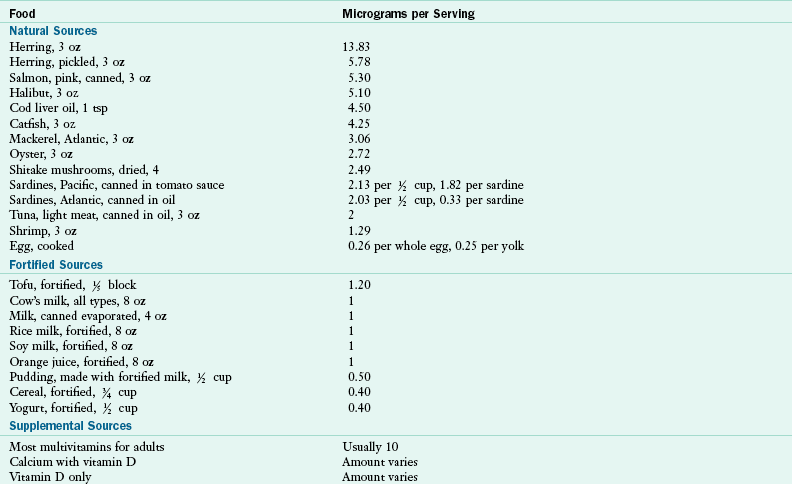Nutritional Facts on Calcium and Vitamin D
Calcium
Any dietary source of calcium counts toward the daily intake, but low-fat milk or yogurt or fortified substitutes are the most efficient and readily available. Lactose-free milk and soy nut and rice drinks fortified with calcium and vitamin D are now available. In addition to milk, a variety of foods and calcium-fortified juices contain calcium and can help children, teens, and adults get sufficient levels of calcium in their diets. If it is difficult to get the recommended amounts of calcium and vitamin D from foods, a combination of food sources and supplements may be needed. Recommended dietary allowances (RDAs) were established in 2011.
Calcium Supplements
Calcium carbonate is the most common and least expensive calcium supplement. It can be difficult to digest and causes gas in some people. Taking magnesium with it can help to prevent constipation. Calcium carbonate is 40% elemental calcium; 1000 mg will provide 400 mg of calcium. Take this supplement with food to aid in absorption.
Calcium citrate is more easily absorbed (bioavailability is 2.5 times higher than calcium carbonate), easier to digest, and less likely to cause constipation and gas than calcium carbonate. It also has a lower risk of contributing to the formation of kidney stones. Calcium citrate is approximately 21% elemental calcium; 1000 mg will provide 210 mg of calcium. It is more expensive than calcium carbonate, and more of it must be taken to get the same amount of calcium.
Calcium phosphate costs more than calcium carbonate but less than calcium citrate. It is easily absorbed and is less likely to cause constipation and gas.
Calcium lactate and calcium aspartate are both more easily digested but more expensive than calcium carbonate.
Vitamin D
Vitamin D is needed for the absorption of calcium from the stomach and for the functioning of calcium in the body. It also acts like a hormone in the body and has many functions throughout the body unrelated to its co-functions with calcium that are continuing to be discovered. Besides being in bone, receptors for vitamin D have been identified in the gastrointestinal tract, brain, breast, nerves, and many other tissues. The vitamin D in foods are micrograms of calciferol.
IU are used on supplement labels and in the 2011 RDA levels in the following table. 1 mcg = 40 IU of vitamin D or calciferol.
There are only a few food sources of vitamin D. Good sources of vitamin D are fortified foods and beverages such as milk, fortified soy, rice and nut beverages, and margarine (check the labels on these foods). Fish, liver, and egg yolks are the only foods that naturally contain vitamin D. If you do not eat vitamin D–rich foods often, you may want to consider taking a vitamin D supplement. Most multiple vitamin supplements contain vitamin D. In addition to dietary sources, sunlight can provide the body with vitamin D because it is synthesized through the skin. Natural food sources include those listed in the following table.
